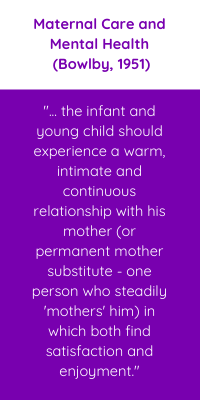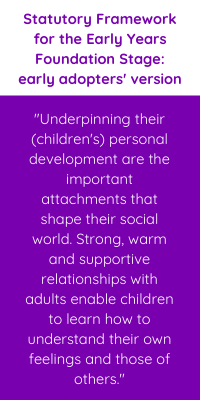Exploring Pedagogy - Introducing John Bowlby

Edward John Mostyn Bowlby was born in London on 26 February 1907, one of six children. His primary care giver was the family nursemaid, Minnie, who along with a second nursemaid and the family nanny looked after Bowlby and his five siblings. Not unusual for the time and the family’s social class, Bowlby would typically see his mother for an hour each day after tea. His father died when Bowlby was five years old. When Bowlby was four years old his nursemaid left the family; Bowlby later described this as tragic as the loss of a mother.
At the age of seven Bowlby was sent to a boarding school, an experience he later referred to as traumatic. Following his school education Bowlby attended Trinity College, Cambridge, where he studied psychology and spent time working with delinquent children, which inspired him to become a child psychiatrist. Bowlby then studied medicine at University College Hospital, followed by studying psychiatry at Maudsley Hospital. At the same time, Bowlby also studied at the British Psychoanalytic Institute.

During the Second World War Bowlby served in the Royal Army Medical Corps. Bowlby married in 1938 and he and his wife went on have four children.
After the war Bowlby was appointed as Director of the Tavistock Clinic and in 1950 became the Mental Health Consultant to the World Health Organisation (WHO).
Bowlby’s early work with children, and possibly his own early childhood experiences, led him to focus on child development, specifically the impact of separation from a child’s main care giver, and the importance of positive attachments.
Rather than studying babies without mothers he turned his attention to typical families who experienced separation for reasons such as illness. The impact of the distress shown by children, referred to as ‘separation anxiety’, and the difficulties in soothing them was well documented and did not appear to be as a result of illness or lack of proper care.
Bowlby’s theories explained how babies are born programmed to form attachments with others as a means of survival, with the first two and a half years of the child’s life as critical for securing this attachment. This need to attach to a primary figure, often but not necessarily the mother, results in a relationship that is more important than any others. The impact of early attachment will continue throughout a child’s life and will set the foundations for future relationships. Disruption to this early attachment, which Bowlby refers to as ‘Maternal Deprivation’, can have long term cognitive, social, and emotional difficulties for a child.
Bowlby did not exclude the need for other attachment figures for children, for example, a father, grandparent, sibling or child carer, but reinforces the importance of that single primary figure.
This additional attachment figure in an early years setting will be the key person and because the importance of this role is essential in supporting children to feel safe and secure in order to learn and develop it is a statutory requirement for every child to have a named key person.
Attachment is at the centre of the key person approach and places high regard on the importance of this secure and loving relationship. This said, it is sometimes a concern for practitioners and leaders that this relationship can be viewed uncomfortably by a child’s parents or main carer, or a child may become too attached or reliant on them as their key person. An effective understanding of attachment and the key person approach should dispel this misunderstanding and ensure an appropriate relationship is in place. A baby or young child will not confuse their key person with their own parent or main carer and are more likely to suffer as a consequence of a reluctant key person. Bowlby (1969) himself commented that when a child has more than one attachment figure it might be supposed that a child’s attachment to his principal figure would be weak and conversely that when a child has only one figure this attachment to that one would be especially intense. This, however, is not so, indeed, precisely the opposite is reported.


How well do practitioners understand attachment and the role of the key person in your setting?
How confident are practitioners in supporting families to understand the misconception that attachment with a key person will lessen the attachment with a parent?
References
Bowlby J. Maternal care and Mental Health. (1951) World Health Organisation
Bowlby J. Attachment and Loss, Vol. 1: attachment. (1969) London: Hogarth
Department for Education. Development Matters. (2020) London: Department for Education
Department for Education. Statutory Framework for the Early Years Foundation Stage: Early adopter version. (2020) London: Department for Education.


